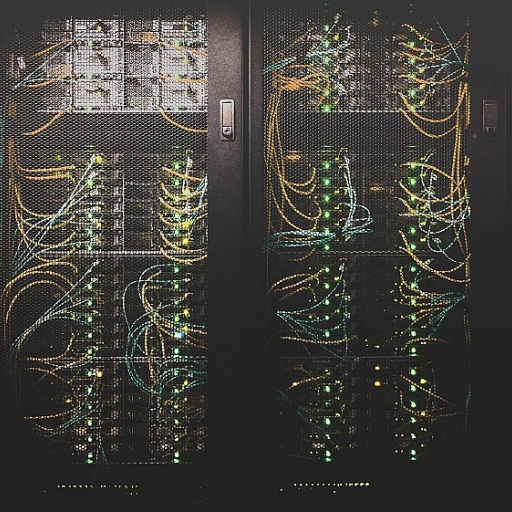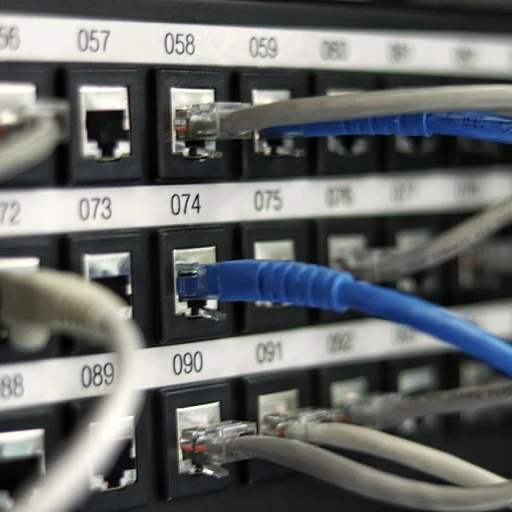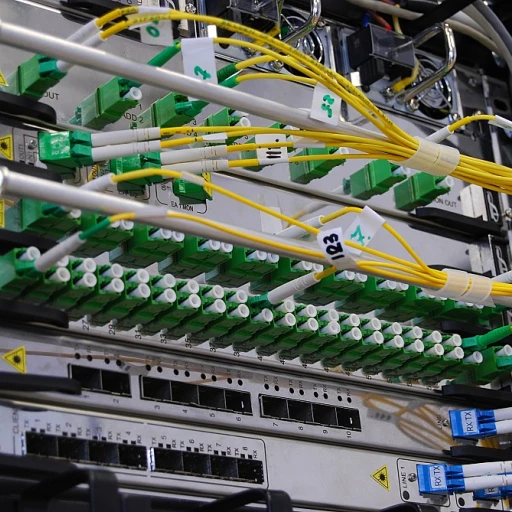
Understanding the Role of Automation in Food Courts
The Evolution of Automation in Food Courts
In recent years, the food industry has witnessed a significant transformation, with automation playing a pivotal role in reshaping food courts and restaurant operations. Automation in food courts is not just about replacing human staff with robots; it's about enhancing the overall customer experience, improving efficiency, and optimizing operations. As the restaurant industry evolves, understanding the role of automation becomes crucial for stakeholders aiming to stay competitive.
Enhancing Customer Experience
Automated systems in food courts are designed to streamline the ordering process, reducing wait times and improving customer satisfaction. By integrating service kiosks and POS systems, customers can place their orders quickly and efficiently, minimizing the need for human intervention. This not only speeds up the service but also allows staff to focus on more personalized customer service, enhancing the dining experience.
Operational Efficiency and Data Utilization
Automation in food courts also contributes to operational efficiency by leveraging data for real-time inventory management and reducing food waste. Automated systems can track orders and inventory levels, ensuring that food chains maintain optimal stock levels and reduce unnecessary expenses. This data-driven approach helps in making informed decisions, ultimately leading to cost savings and improved service quality.
Addressing Labor Challenges
The implementation of automation addresses some of the labor challenges faced by the fast food and restaurant industry. By reducing reliance on human staff for repetitive tasks, restaurants can lower labor costs and allocate resources more effectively. This shift allows businesses to focus on enhancing customer service and improving the overall dining experience.
Technological Innovations Driving Change
Emerging Technologies Shaping Food Court Automation
The restaurant industry is witnessing a significant transformation, driven by technological innovations that are reshaping how food courts operate. Automation in food courts is not just about replacing human staff with robots; it's about enhancing the overall dining experience through efficient, real-time systems. Let's explore some of the key technologies driving this change.
Service Kiosks and POS Systems
One of the most visible innovations in food automation is the deployment of service kiosks. These automated systems allow customers to place orders quickly, reducing wait times and improving customer satisfaction. Integrated with advanced POS systems, these kiosks streamline the ordering process, ensuring that orders are accurately captured and processed in real time. This technology not only enhances the customer experience but also optimizes labor costs by allowing staff to focus on more complex tasks.
AI and Machine Learning
Artificial intelligence and machine learning are at the forefront of automation in the food industry. These technologies enable restaurants to analyze vast amounts of data to predict customer preferences and optimize inventory management. By understanding patterns in customer orders, restaurants can reduce food waste and ensure that popular items are always in stock. AI-driven automation is transforming the future of software development, offering insights into how these systems can be further refined and improved.
Robotics in Food Preparation
Robots are increasingly being used in food preparation, particularly in fast food chains where speed and consistency are crucial. These automated systems can handle repetitive tasks such as flipping burgers or assembling sandwiches, ensuring that each order meets the restaurant's quality standards. By integrating robotics into their operations, food courts can maintain high levels of efficiency and consistency, ultimately enhancing the customer experience.
Cloud-Based Systems and IoT
Cloud-based systems and the Internet of Things (IoT) are revolutionizing how restaurants manage their operations. These technologies allow for seamless communication between different components of the ordering system, from service kiosks to kitchen displays. By leveraging cloud technology, restaurants can access real-time data on customer orders, inventory levels, and staff performance, enabling them to make informed decisions that enhance service quality.
As we delve deeper into the benefits and challenges of automated ordering systems, it's clear that these technological innovations are pivotal in driving change within the restaurant industry. The integration of AI, robotics, and cloud-based systems is not only transforming how food courts operate but also setting the stage for future advancements in food automation.
Benefits of Automated Ordering Systems
Advantages of Automated Ordering Systems in Food Courts
The integration of automation in food court ordering systems is revolutionizing the restaurant industry, offering a multitude of benefits that enhance both customer experience and operational efficiency. As we delve into the technological innovations driving this change, it's crucial to understand the tangible advantages these automated systems bring to the table.
- Reduced Wait Times: One of the most significant benefits is the reduction in wait times. Automated service kiosks allow customers to place orders quickly and efficiently, minimizing the time spent in queues. This not only improves the dining experience but also increases the turnover rate for food chains.
- Improved Accuracy: By eliminating the human element in order taking, automated systems significantly reduce errors. This ensures that orders are processed accurately, enhancing customer satisfaction and reducing food waste due to incorrect orders.
- Cost Efficiency: Automation helps in reducing labor costs by streamlining operations. With robots and technology handling repetitive tasks, staff can focus on more value-added activities, improving overall customer service.
- Real-Time Data and Inventory Management: Automated POS systems provide real-time data on orders and inventory levels. This facilitates better inventory management, reducing food waste and ensuring that restaurants can meet customer demand efficiently.
- Enhanced Customer Experience: With the ability to customize orders and access nutritional information, customers enjoy a more personalized service. This level of customization is a key factor in improving customer satisfaction and loyalty.
As demonstrated in our case study, the successful implementation of these systems can lead to a significant transformation in how food courts operate, setting a new standard for restaurant automation in the food industry.
Challenges in Implementing Automation
Overcoming Barriers to Automation in Food Courts
Implementing automation in food court ordering systems presents a unique set of challenges that need to be addressed for successful integration. While the benefits of automated systems are clear, the path to achieving them is not without obstacles.
Technological and Infrastructure Challenges
One of the primary hurdles is the technological infrastructure required to support automation. Many food courts, especially those in older establishments, may lack the necessary systems to integrate advanced technology. Upgrading these systems can be costly and time-consuming, requiring significant investment in both hardware and software.
Data Management and Integration
Another challenge lies in managing and integrating data from various sources. Automated systems rely heavily on real-time data to function effectively, from inventory management to processing customer orders. Ensuring seamless data flow between different systems, such as POS systems and inventory management software, is crucial for maintaining efficiency and reducing food waste.
Human Factors and Staff Adaptation
The human element cannot be overlooked. Staff members need to adapt to new technology, which may require training and a shift in job roles. There is often resistance to change, especially when it involves replacing traditional methods with automated systems. Ensuring that staff are comfortable and proficient with new technology is essential for maintaining high levels of customer service and satisfaction.
Cost and Financial Considerations
Financial constraints are a significant barrier for many food courts considering automation. The initial investment in technology, coupled with ongoing maintenance costs, can be prohibitive for smaller establishments. Balancing these costs with the potential savings in labor and increased efficiency is a critical consideration for decision-makers in the restaurant industry.
Customer Experience and Acceptance
Finally, customer acceptance of automated systems is a crucial factor. While some customers appreciate the speed and efficiency of automated ordering, others may prefer human interaction. Ensuring that the dining experience remains positive and that customer satisfaction is maintained is vital for the success of automation in food courts.
Case Study: Successful Implementation
Real-World Success in Food Court Automation
In the ever-evolving landscape of the restaurant industry, a particular case study stands out as a beacon of successful implementation of automated ordering systems. This example highlights the transformative power of technology in enhancing customer experience and operational efficiency.
One prominent fast food chain took the leap into automation by integrating service kiosks and robots into their food courts. The primary goal was to reduce wait times and improve customer satisfaction. By leveraging real-time data, the automated systems were able to streamline orders and manage inventory more effectively, minimizing food waste and optimizing labor costs.
The introduction of these systems allowed the restaurant to handle a higher volume of customers without compromising on service quality. The automated ordering system, equipped with advanced POS systems, enabled customers to place orders swiftly, ensuring a seamless dining experience. This not only improved the speed of service but also freed up human staff to focus on enhancing customer service and addressing more complex customer needs.
Moreover, the integration of automation in this food court setting provided valuable insights into customer preferences and behavior. The data collected through these systems allowed the restaurant to tailor their offerings and improve overall customer satisfaction. As a result, the restaurant saw a significant increase in customer retention and a boost in sales.
This case study exemplifies how automation, when implemented thoughtfully, can revolutionize the food industry. It underscores the importance of embracing technological innovations to stay competitive and meet the evolving demands of customers in the fast-paced world of food service.
Future Trends in Food Court Automation
Emerging Trends Shaping the Future
The future of automation in food court ordering systems is poised for significant evolution, driven by technological advancements and shifting consumer expectations. As we look ahead, several trends are expected to shape the landscape of food automation in the restaurant industry.
Integration of AI and Machine Learning
Artificial intelligence and machine learning are set to revolutionize how food orders are processed and managed. These technologies enable systems to learn from customer preferences and data, allowing for more personalized customer experiences. AI-driven analytics can optimize inventory management, reducing food waste and improving efficiency in real time.
Enhanced Customer Interaction with Voice Technology
Voice-activated service kiosks are becoming increasingly popular, offering a more intuitive way for customers to place orders. This technology not only speeds up the ordering process but also enhances customer satisfaction by reducing wait times and providing a seamless dining experience.
Robotics in Food Preparation and Delivery
Robots are gradually making their way into the food industry, particularly in fast food chains. These automated systems can handle repetitive tasks such as food preparation and delivery, allowing human staff to focus on more complex customer service roles. This shift not only reduces labor costs but also ensures consistent quality and speed in service.
Blockchain for Transparency and Trust
Blockchain technology is being explored for its potential to enhance transparency in the restaurant industry. By providing a secure and immutable record of transactions, blockchain can build trust with customers by ensuring the authenticity and quality of ingredients used in food preparation.
Conclusion
As these trends continue to develop, the restaurant automation landscape will likely see a transformation that prioritizes efficiency, personalization, and enhanced customer service. The case study of successful implementation highlights the potential benefits and challenges that come with embracing these innovations. Ultimately, the future of food court automation promises to deliver a more streamlined and satisfying dining experience for all.





-large-teaser.webp)









